My name is Scott Niemann, I’m Director of Product Management at Revenera, which is an enabling technology that takes products to market fast, unlocks the value of your IP and accelerates revenue growth from the edge to the cloud.
In this article, I’m going to talk about optimizing software product ops in a hybrid world and why the hybrid concept is important.
Here’s our main talking points:
- Why: Business insights and a single system of record
- What: A single system for all deployment and monetization models
- How: Best practices
- Business case considerations
Let’s go ahead and dive in 👇
Why: Business insights and a single system of record
Why is it important?
Business agility
A lot of companies are introducing new deployment models, new license models and have plans to transition to the cloud and the products to SaaS-based applications but they also have to maintain their existing systems, on-premise solutions and license models.
You need a platform that allows these rapid changes without necessarily holding up the back-end processing of the order process as well as the fulfillment process. Basically, you want to be able to transition to these new models without having to redo everything you've done in terms of the order process system.
Efficiency
So you want efficiency. You want to be able to grow into these new systems and integrate them into the ordering process. You also want the analytics based on how your customers are using the products and services you're selling as well as the integrations to the business systems you may have today and being able to utilize those same types of systems and integrate them into a single back end to provide business insights.
Streamline quote-to-cash and revenue recognition
Everyone has a quote-to-cash system today where orders are being processed and how those orders are fulfilled, how that revenue is recognized and how your customers are using their products and how they're renewing based upon the types of models you may be presenting.
If you're introducing new products and services and if you're from a traditional perpetual on-premise base moving to subscription or even to the cloud, you don't want to have to create a new cash process with each new deployment model.
Business continuity
In areas where there's a lot of M&A, you're acquiring new products that already have existing processes and flows. You don't necessarily want that to be a separate system but instead to be integrated so you can have a single view of data across your customers.
Managing products in silos grows complexity and operational overhead
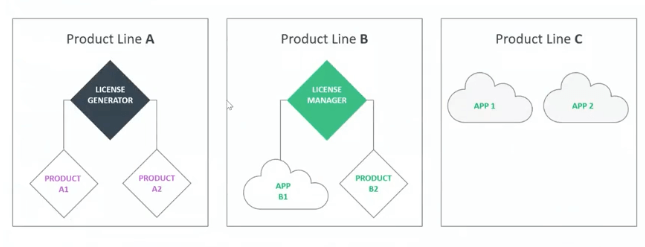
There's this emerging SaaS market where a lot of folks are taking on-premise to the cloud. How this works is you have a set of silos of different products and you have to consider how those products are going to be consumed by your customers and how you're going to understand your customer insights and customer growth around the use of those products. This is a typical quote-to-cash process.
Quote to cash: Business process and systems
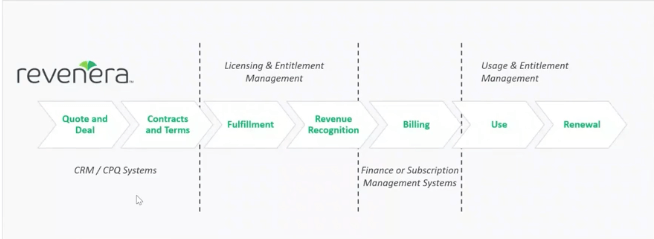
There's different components playing in different parts of these systems. The entitlement management isn't part of the order process but feeds from the order process to fulfill the software and services. Fulfillment means if it's an on-premise application, we ensure your customers receive the software download if that's something you're distributing. If it's a license, they need to activate the software and this can be done automatically through the entitlement system.
Then typically, there's billing, which is fed from that system and on the other end there's use and renewal. When we say ‘use’ in an entitlement system, typically in the quote-to-cash, you want data and insights to what's going on with those products and services. If you sell 100 licenses to somebody, you want to know if they're using it and how they're using it and that helps to aid in the renewal process.
You want to understand the customer behavior to see if they're getting value immediately, rather than at the end of the renewal cycle when it's too late. If there's 30 days left to renew and they haven't utilized more than 10% of the licenses they bought, most likely, they're not going to renew everything.
Software monetization
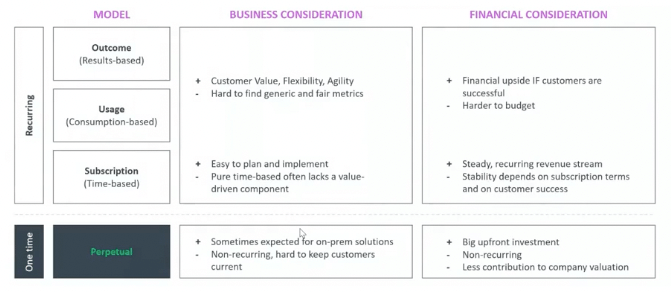
Your organization may be thinking about how to monetize more effectively. The business considerations of these models are very powerful. Subscription is the most common we're seeing in the transition process. We do see customers moving to consumptive-based models and there's a lot of considerations to keep in mind when you're going to these more advanced models.
You’re going to have different product lines consuming these different models and you don't want to have to manage those in different silos with potentially different types of order processing because then you have different datasets that represent what your customers are doing. You have to pull this data to create a 360 view of data across your customers but it would be nice if it was all in a single system to begin with.
What: A single system for all deployment and monetization models
A central view of your digital business
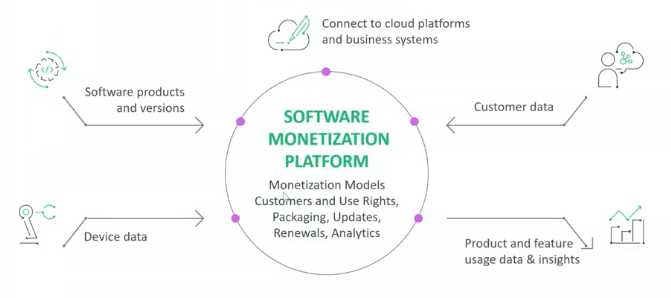
There's a lot of input vectors in a software monetization platform. The platform allows your organization the ability to package your products or services around different models (perpetual models, subscription models, usage-based models) but it also does enforcement of those models. For example, if you're packaging a new model and you're moving to a subscription, you want to make sure at the boundary of that one-year subscription that if the customer is still not renewed, it can be controlled through a monetization platform and to ensure those entitlement use rights.
The system also makes it easy to see renewal information, since it has all the information about when the renewal should happen and whether that renewal has a high probability of success because you have all the analytics based on their use of your products. This data can be consumed in many different ways from existing systems you may have in-house that do business insights but this gives you the actual use of your products.
Monetization platform
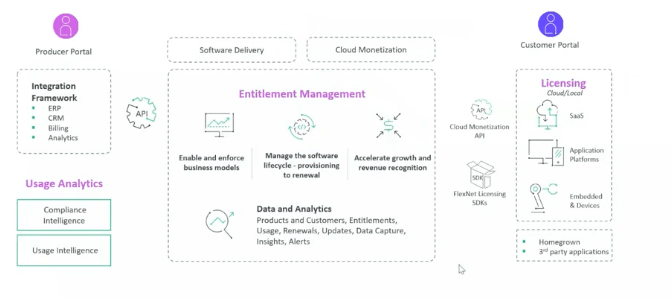
One of the main components to the software monetization platform is the entitlement management. In the quote-to-cash process, the entitlement system is fed right from other systems. It also allows you to manage the lifecycle and allows you to get the data to understand whether your customers are getting value from the products you're selling to them.
Another part of the platform is how you're getting the data. If you have a SaaS application, in one way or another, you’re getting what we call fulfillments which is the right to use the software they acquired so that they can operate and fulfillment can be something as simple as a license. Those use rights are managed in the central entitlement management system.
Top level benefits
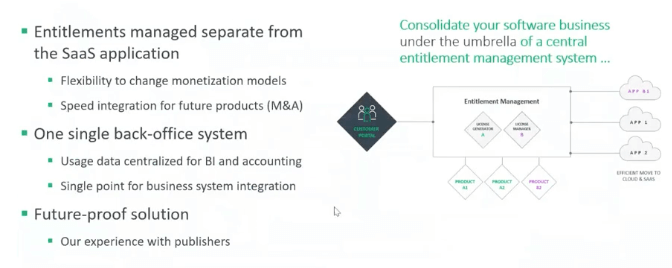
The top level benefits are:
- Managing the use rates in the entitlement system and not the SaaS application: A lot of customers making this transition to SaaS start basically building entitlement systems inside the SaaS app. This is a bad thing because you're creating silos. However, what you should be doing is leveraging existing systems you may already be using which do this already for on-premise applications whether it's perpetual SaaS or plain subscription-based on-premise applications.
- One single back-office system: This is good for the data insights because if I have a single back office system where I can report all the usage data, no matter what model or deployment model I'm selling, I can get a clearer picture of what customers own how they're using the different product lines to give me an idea of what's successful and what isn't. Or for a usage model, you have data you can use to push off to a billing system to create monthly bills.
How: Best practices
Single pane of glass backend for clear 360 views of the customer
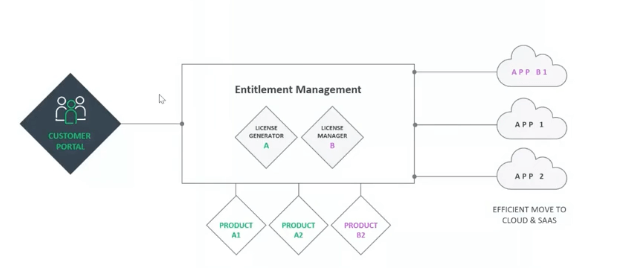
The most immediate need is to support your existing customers with existing products but you don't want to have the data managed elsewhere. Entitlement systems will have hooks to plug in third-party code or licensed generators so no matter what those products are and whether they're on-premise products or SaaS products when they request a license, they can retrieve the license automatically.
When something is reserved or checked out, the record of what happened is managed in the data for the entitlement system. The data can be collected and reconciled against the products your customer owns so you have clearer visibility when you start doing your reporting.
SaaS licensing example
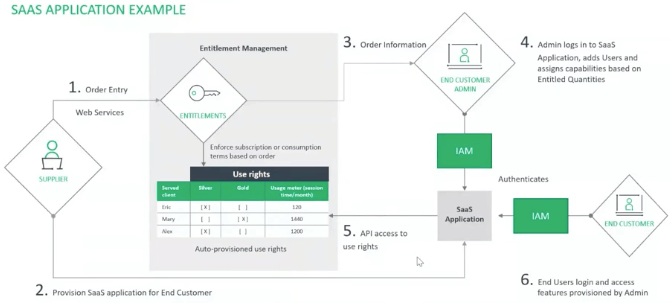
The entitlement use rights and the distribution of those use rights apply the same with on-premise licensing and SaaS licensing. The entitlements system understands the monetization model which understands the user count and what it does is auto-provision the information so it's immediately available to us. Immediately as the order happens, it's fulfilled and ready to use by the customer.
In the SaaS app, an admin can connect to the entitlement management system through an API or a portal and assign the various counts and additions they bought of the product to different users in the organization. It works in the same way as assigning different roles and permissions to customers for people in your organization and SaaS applications but the information is maintained by the entitlement system.
Data across all entitlements and product lines
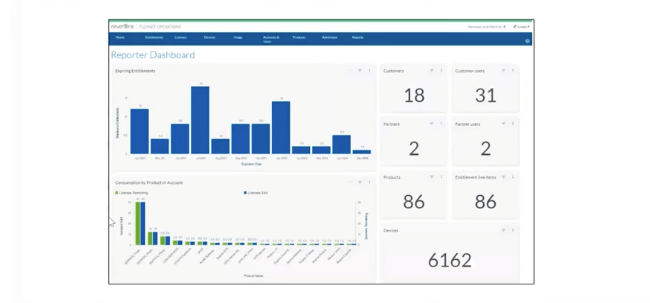
I want to know what's expiring across my user base, across all the accounts. I want to see what entitlements are expiring within the next 90 days, or 30 days and I want to see what needs to be taken care of immediately. So I can click in and drill down to see this information to help the renewal process.
Since all the different products and deployment models are in the same system, you may want a broad view of product adoption of product use. If you integrate the data at the entitlement point to begin with, it makes it much simpler to drill down and do analytics without having to pull from many different sources to create a single view.
Business case considerations
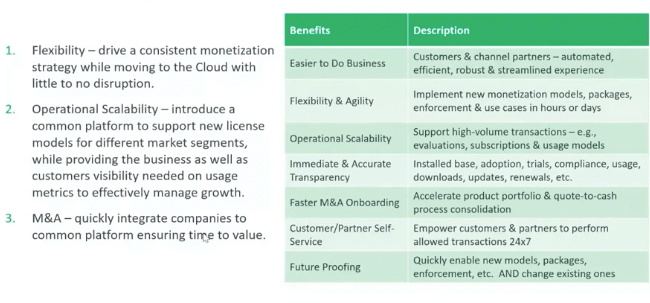
Most likely, everybody's moving to some kind of recurring model and variants of those recurring models so you have to have a platform that's flexible and can also be able to adapt itself to other product lines you may go to in the future with SaaS.
It needs to have operational scalability and data from across those different deployment models to have visibility to help in customer growth. If you have insights into how your products or your customers are consuming those products and you can find out immediately upfront whether they're getting value or not from the data, you can be proactive and reach out to them.
Finally, a system to do this can integrate other disparate technologies into a single view through M&A so you can have a single pane of glass of reporting.



 Follow us on LinkedIn
Follow us on LinkedIn



